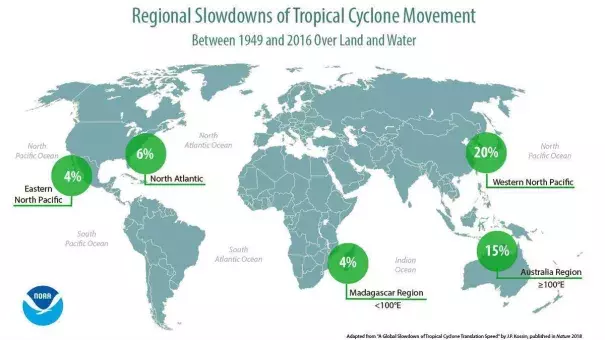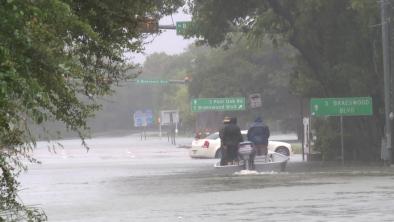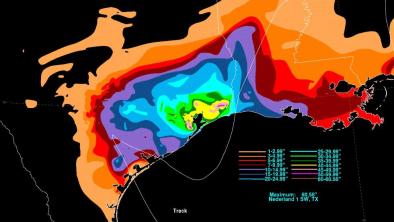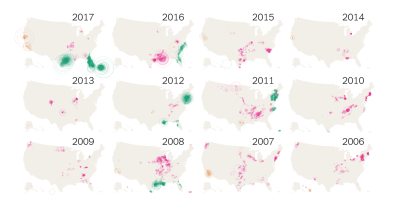Hurricanes and typhoons are slowing down, which means more time to do damage

A new study by a scientist with the National Oceanic and Atmospheric Administration has found that over the past seven decades, tropical cyclones have slowed down near coastlines around the world.
...
Kossin wanted to see if, on average, the traveling speed of such tropical cyclones was slowing down. To find out, he used data from the U.S. National Hurricane Center and the Joint Typhoon Warning Center to study the position of such storms’ centers every six hours. From those, he was able to calculate the moving speed of these coastal storms between 1949 and 2016.
Kossin found that, on average globally, the speed at which these tropical cyclones moved had fallen by about 10% with just 0.5 degrees Celsius of warming. In certain regions, that slowdown was even more extreme: about 30% over land affected by tropical cyclones from the western North Pacific and 20% over land affected by tropical cyclones from the North Atlantic.
“I was surprised at how strong a signal it was and how large a signal it was,” Kossin said. “Ten percent over 70 years is really quite a lot.”
Still, the finding fits with what is known about global warming and the dynamics of the atmosphere, he said. Tropical cyclones are largely carried along by atmospheric circulation — and that has been slowing down, as the temperature gradient between the poles and the tropics begins to shrink (because the poles are warming faster than the tropics are).
A storm that lingers longer over inhabited coastlines is a more dangerous storm, Kossin said, because it allows more rain to fall in a local area, raising the risk of flooding and storm surge. It may even increase the damage from hurricane winds, simply by battering the same structures over a longer period.
Related Content





